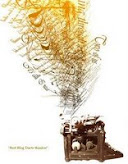Caillebotte was born in 1848. He began to paint around the time when his family bought the property on the Yerres River in 1860. Caillebotte went away to fight in the Franco-Prussian War and when he returned he began to really study painting. He met a collection of young painters, including Edgar Degas, Claude Monet, and Auguste Renoir, and became interested in Impressionism.
After his father died in 1874 and then in mother in 1878, Caillebotte funded exhibitions for each of these artists. He also purchased their paintings and by the time he died he had an impressive collection of Impressionist works. He tried to leave the collection to the French government if only it would hang the paintings in the Luxembourg Palace but it refused most of the art. Impressionism was still not the prominent and accepted artistic style in 1894. When in the late-1920s the French government changed its mind, it was too late; the widow of Caillebotte’s son said no.
He also helped fund four of the Impressionist exhibitions. It was at the second Impressionist exhibition (not one to which he contributed money) that Caillebotte’s art was first shown.
Unfortunately, this article is too long already. You have just read a short biography on Caillebotte and tomorrow I’ll post the second half which is all about his art. And to tide you over until then, Paris Street, Rainy Day:

EDITED TO ADD: Gustave Caillebotte, Part 2








No comments:
Post a Comment